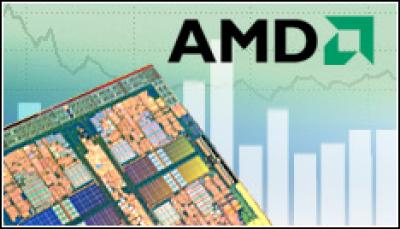AMD: Enhanced Opterons Are Greener

The new Opteron processors offer better performance and energy efficiency than their quad-core predecessors, and AMD officials are aiming them at HPC and cloud computing environments
With the release of two new models of its six-core Opteron processor, Advanced Micro Devices is not only expanding the reach of its “Istanbul” family of chips, but also is putting more pressure on larger rival Intel.
AMD officials are looking to the six-core Opteron processors to compete not only with Intel’s Xeon 5500 Series “Nehalem EP” processors for two-socket systems, but also with the upcoming Nehalem EX chips for systems with four or more sockets.
And the competition will be on a number of levels, from performance to energy efficiency to price, all of which can only benefit users, Nathan Brookwood, an analyst with Insight64, said in an interview.
“They’re firing on all cylinders,” Brookwood said of AMD. “This is good for the industry, but it needs healthy competition between Intel and AMD. The fact that AMD is now demonstrating its capabilities to run out products is good.”
Resource Library:
AMD July 13 unveiled the six-core Opteron SE and HE models, which offer greater energy efficiency and performance-per-watt than the regular Istanbul chip. The new models offer 18 percent better performance per watt than their quad-core counterparts.
The SE, which consumes 105 watts of power, is aimed at HPC (high-performance computing) environments. The HE, which consumes 55 watts, is tailored more for dense computing environments, such as cloud computing.
“In addition to lowering server Active Idle power and boosting server performance per watt, these new Six-Core AMD Opteron HE processors are designed to provide significantly more processing performance than prior low-power AMD Opteron processors,” Andy Parma, product marketing manager for server and workstation products at AMD, said in a 12 July blog post. “Servers using these processors are able to achieve up to 50 percent higher performance than servers using Quad-Core AMD Opteron 2300 Series HE and 8300 Series HE processors in the same power and thermal envelope. … Whether they’re being used in a cloud cluster or a [HPC] cluster, the newest AMD Opteron HE processors provide plenty of performance for only a few watts.”
Intel’s Nehalem EP processors, released in March, generated a lot of interest throughout the industry, Brookwood said. AMD followed that with the release of Istanbul in June, almost six months ahead of schedule. The release marked a turning point for AMD, which two years earlier suffered through technical glitches and delays with its first quad-core chip, “Barcelona.”
A key advantage that the Xeon 5500 Series has over Opterons is that they offer three integrated memory modules, whereas AMD’s chips have two, Brookwood said, and the speed of communication between the memory and chip is a key measure of overall performance.
The Nehalem architecture is the first from Intel to feature an integrated memory controller; AMD first introduced it with the initial Opteron in 2003.
However, AMD offering six cores, as compared with the four cores on the Nehalem chips, closes that gap a bit, Brookwood said. In addition, the backward compatibility of the AMD chips—IT administrators can swap out the quad-core Opterons for the new six-core chips, whereas with the new Nehalem architecture, Intel is asking businesses to replace entire servers—is a benefit in these recessionary times, when most enterprises are looking for the least expensive way to upgrade systems.
However, that could reverse itself in 2010, when Intel rolls out the next generation of Nehalem EP chips built with the company’s 32-nanometer process, which will mean that IT administrators can swap out their older Nehalem EP processors. Also in 2010, AMD is aiming to make a major platform shift to take advantage of DDR3 (double data rate 3) memory and Socket G34, which will offer four memory controllers.
“That may work against AMD, unless the economy is better,” Brookwood said. “These things are continually changing, which make this market very interesting.”
The industry should get a better read over the next week on how the chip market is doing. Intel officials are scheduled to release earnings on 14 July; AMD’s earnings release is set for 21 July.